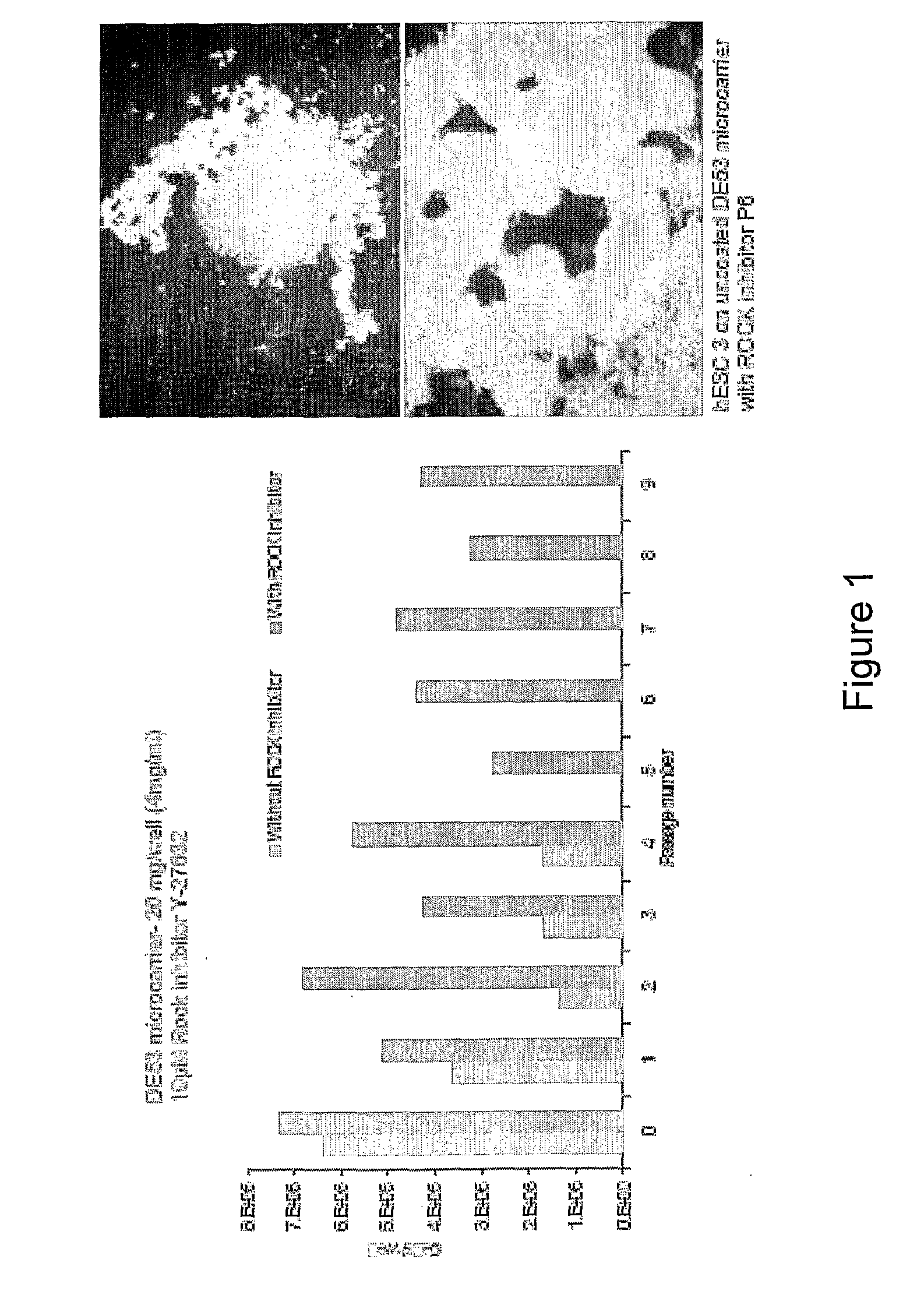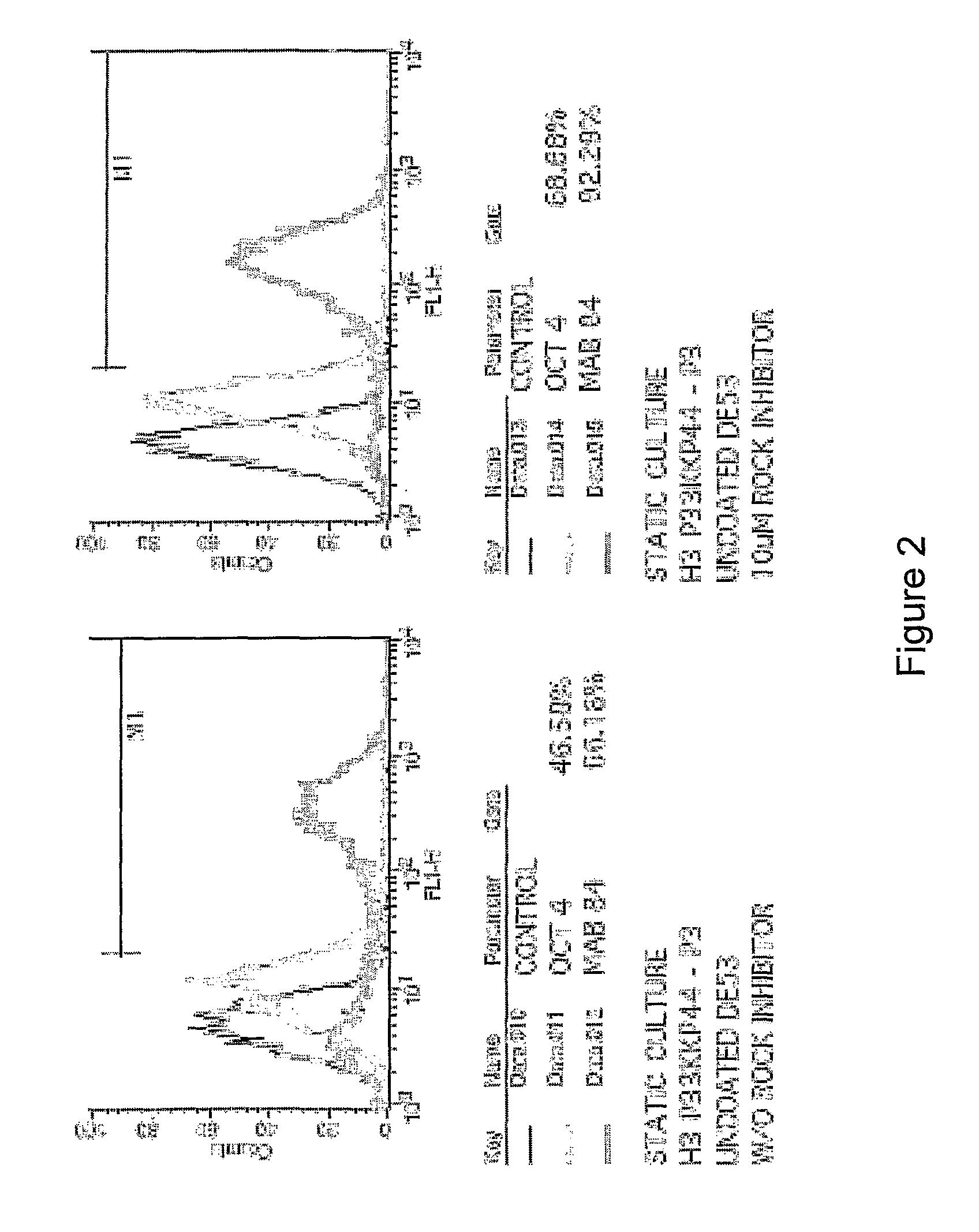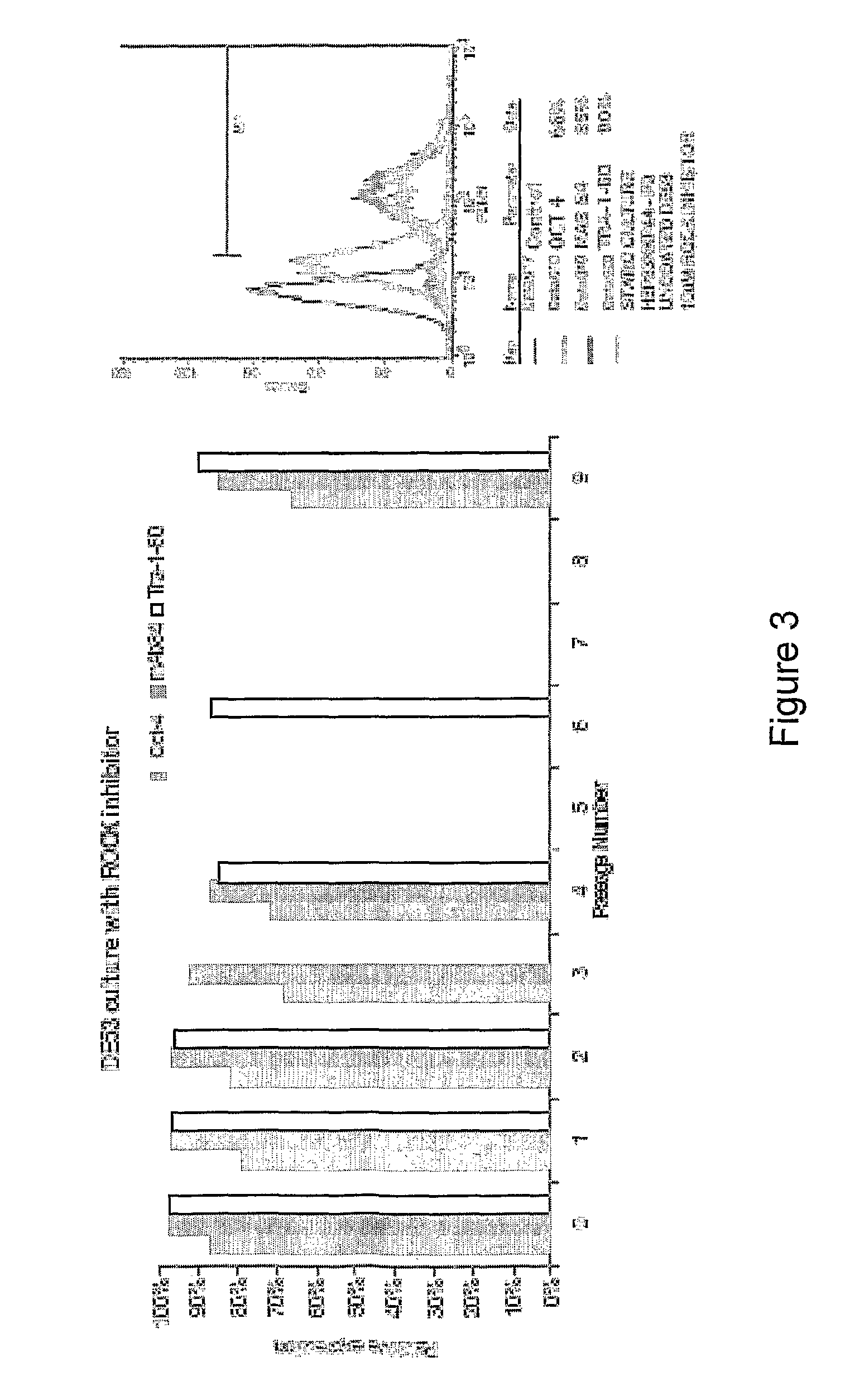Culture of pluripotent and multipotent cells on microcarriers
a multi-potent cell and microcarrier technology, applied in the field of pluripotent and multi-potent cells culture on microcarriers, can solve the problems of large surface area of seeding plates, large surface area such as nunc trays, and the manual nature of passing cells by repeated pipetting or enzymatic treatment to break up these 2d colonies to smaller sizes
- Summary
- Abstract
- Description
- Claims
- Application Information
AI Technical Summary
Benefits of technology
Problems solved by technology
Method used
Image
Examples
example 1
Human Embryonic Stem Cells (hESC)
[0458]Human embryonic stem cell lines, HES-2 (46 X, X), and HES-3 (46×, X) are obtained from ES Cell International. The cells are frozen and stored in liquid nitrogen as a suspension of 200×200 μm cell clumps obtained from 2D colony culture or as cell-microcarrier aggregates obtained from microcarrier cultures.
example 2
Cell Culture: 2D Colony Culture
[0459]For maintenance of hESC, cells can be cultured at 37° C. / 5% CO2 on Matrigel-coated culture dishes (incubated at 4 degrees C. overnight with Matrigel (Becton Dickinson), diluted in cold KO-DMEM, 1:30 dilution). Cells are routinely maintained in organ culture dishes (OCD) with 1 ml of media.
[0460]Media used are either Conditioned Media (CM) from MEF feeders, StemPro hESC serum free media (Invitrogen) or mTeSR-1 serum free media (Cell Technologies). Medium is changed daily. The static colony cultures are passaged weekly either by enzymatic treatment with collagenase (Choo et al, 2004) or trypLE Express (Invitrogen) or by mechanical dissection using the StemPro EZPassage Stem Cell Passaging Tool (Invitrogen)
example 3
Cell Culture: 3D Microcarrier Cultures
[0461]Cells suspension obtained either from dispersed 2D colony culture or directly from liquid nitrogen storage (200×200 μm tissue obtained from 2D colony culture or as cell-microcarriers aggregates) are seeded at concentrations of 0.1-0.3×106 / ml on microcarrier suspension (4 mg / ml).
[0462]In some experiments, in order to ensure more homogeneous culture, the cell inoculum is screened through 100 and 500 μm mesh sieve before its addition to the microcarrier suspension. Cells are cultured at 37° C. / 5% CO2 on non attachment 6 well dishes (Corning) in static condition or agitated at 100 or 150 rpm (IKA Orbital Shaker). The media used are either MEF-CM or defined media. Medium is changed daily. The cultures are passaged weekly following either enzymatic treatment with collagenase or trypLE or following mechanical dissociating by repeated pipetting at a split ratio of 1:2 to 1:10. Replating of microcarrier cultures to 2D colony culture is done by plac...
PUM
| Property | Measurement | Unit |
|---|---|---|
| size | aaaaa | aaaaa |
| size | aaaaa | aaaaa |
| size | aaaaa | aaaaa |
Abstract
Description
Claims
Application Information
 Login to View More
Login to View More - R&D
- Intellectual Property
- Life Sciences
- Materials
- Tech Scout
- Unparalleled Data Quality
- Higher Quality Content
- 60% Fewer Hallucinations
Browse by: Latest US Patents, China's latest patents, Technical Efficacy Thesaurus, Application Domain, Technology Topic, Popular Technical Reports.
© 2025 PatSnap. All rights reserved.Legal|Privacy policy|Modern Slavery Act Transparency Statement|Sitemap|About US| Contact US: help@patsnap.com



